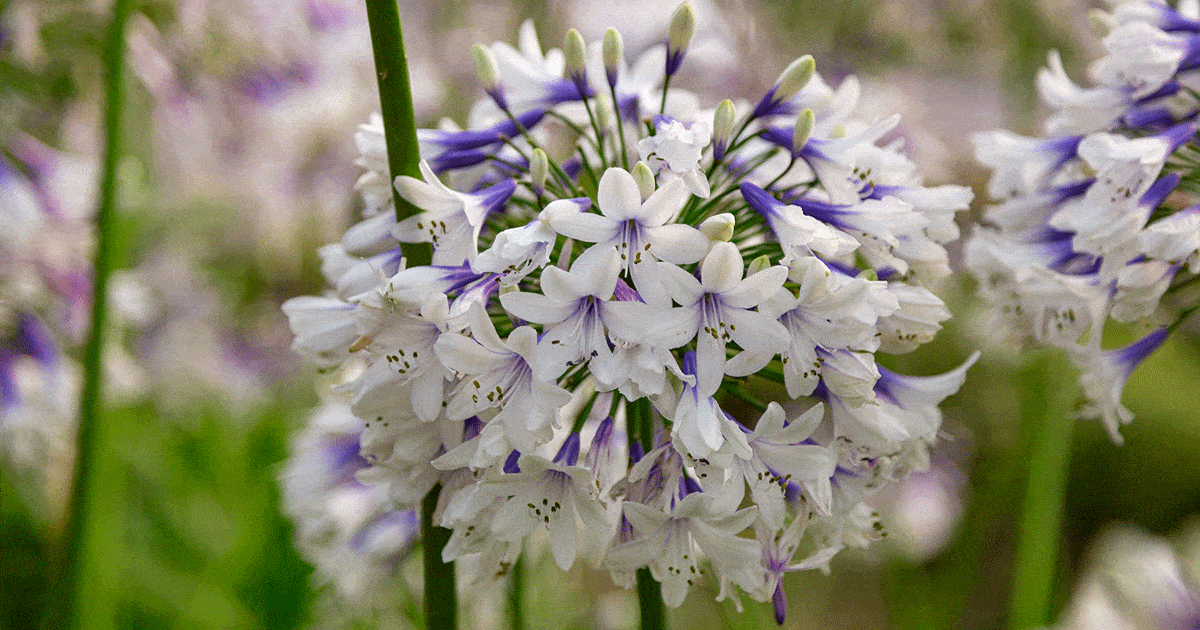Magnificent Agapanthus: Enhancing Your Garden's Elegance
Magnificent Agapanthus: Enhancing Your Garden's Elegance
Blog Article
Grasping the Art of Agapanthus Treatment: Vital Actions for Healthy Growth and Lively Blossoms
In the realm of cultivation, the cultivation of agapanthus stands as a satisfying undertaking for those who look for to nurture these sophisticated flowering plants. With their striking flowers and graceful vegetation, agapanthus has caught the attention of garden enthusiasts worldwide. However, attaining ideal growth and vibrant blooms requires a nuanced method that incorporates various crucial actions. From selecting the best selection to grasping trimming techniques, the trip towards growing flourishing agapanthus plants is complex and holds the key to opening the full potential of these organic treasures.

Picking the Right Agapanthus Variety

When selecting the appropriate Agapanthus range for your garden, take into consideration elements such as environment suitability, flower color, and growth behavior. Additionally, think about the climate in your area to guarantee the Agapanthus variety you choose can flourish in your particular problems. Comprehending the growth habit of various Agapanthus ranges is essential for appropriate placement within your yard.
Suitable Growing Conditions
Thinking about the optimum ecological needs is essential for effective Agapanthus growing. Agapanthus plants are delicate to chilly temperatures and must be protected from frost during winter season months.
To make certain healthy development and vivid flowers, plant Agapanthus light bulbs at a deepness of regarding 2-4 inches and area them 8-12 inches apart. Mulching around the base of the plants assists retain dampness and reduces weed growth.
Watering and Feeding Tips
Maintaining correct wetness levels and giving important nutrients are crucial elements in the treatment routine for Agapanthus plants. It is vital to strike a balance when it comes to watering Agapanthus. If overwatered, these plants like regularly moist dirt yet are vulnerable to root rot. Throughout the expanding period, water deeply as soon as a week, making certain the soil is well-draining to avoid waterlogging. In hotter environments or during durations of dry spell, even more regular watering might be needed to maintain the dirt evenly moist. Nonetheless, lower watering in the winter to stop waterlogged problems.
Feeding Agapanthus is important for advertising healthy and balanced development and prolific blooms. Use a balanced plant food, such as a 10-10-10 formula, in the very early springtime as brand-new development emerges. see post Repeat this application every 6-8 weeks throughout the growing season. Avoid too much fertilization, as it can bring about rich foliage at the cost of blossoms. Always follow the manufacturer's instructions for proper dilution and application techniques. By complying with these watering and fertilizing ideas, you can guarantee your Agapanthus plants grow and produce vibrant, resilient blossoms.
Pruning Methods for Agapanthus
Pruning Agapanthus plants at the suitable times and with correct methods is vital for keeping their wellness and promoting optimum development and blooming. The perfect time to trim Agapanthus is in late winter season or very early springtime before brand-new growth arises.
For flowered stems, wait up until the blooms have actually withered and afterwards cut them back to the base. This not only tidies up the plant's appearance but additionally urges the growth of new blossom buds. Deadheading invested blossoms can also redirect the plant's power into producing more flowers as opposed to establishing seeds. Nonetheless, if you desire to accumulate seeds for proliferation, leave some flowers to mature and completely dry on the plant.
Remember to use clean, sharp tools to make precise cuts and lower the danger of introducing diseases. Agapanthus. Regular pruning will certainly help keep your Agapanthus looking cool and healthy while making sure a bountiful display of beautiful blooms
Taking Care Of Typical Bugs and Illness
After ensuring correct pruning strategies for Agapanthus, it is essential to resolve usual insects and diseases that can influence the wellness and vitality of these plants. One usual insect get redirected here that affects Agapanthus is the Agapanthus gall midget.
One more common issue is fungal leaf area, which offers as dark sores on the leaves. To stop fungal diseases, ensure excellent air blood circulation around the plants, stay clear of overhanging watering, and remove any kind of infected leaves immediately. Additionally, Agapanthus plants can experience from root rot if they are planted in poorly draining soil. To avoid this, plant Agapanthus in well-draining soil and avoid overwatering. By being watchful and taking timely activity against diseases and pests, you can aid your Agapanthus plants grow and produce vivid blooms.

Conclusion
In conclusion, understanding the art of agapanthus treatment involves choosing the best selection, providing ideal planting problems, appropriate watering and fertilizing, ideal pruning techniques, and resolving usual insects and diseases. By complying with these crucial steps, you can make sure healthy and balanced development and lively blossoms for your agapanthus plants. Keep in mind to on a regular basis check and keep your plants to advertise their total well-being and long life.
To make certain healthy development and dynamic flowers, plant Agapanthus bulbs at a depth of regarding 2-4 inches and room them 8-12 inches apart. By following these watering and feeding suggestions, you can guarantee your Agapanthus plants flourish and produce vivid, long-lasting flowers.
One usual insect that impacts Agapanthus is the Agapanthus gall midge. Additionally, Agapanthus plants can endure from root rot if they are grown in inadequately draining dirt. By following these essential actions, you can make certain healthy and balanced development go to this web-site and dynamic flowers for your agapanthus plants.
Report this page